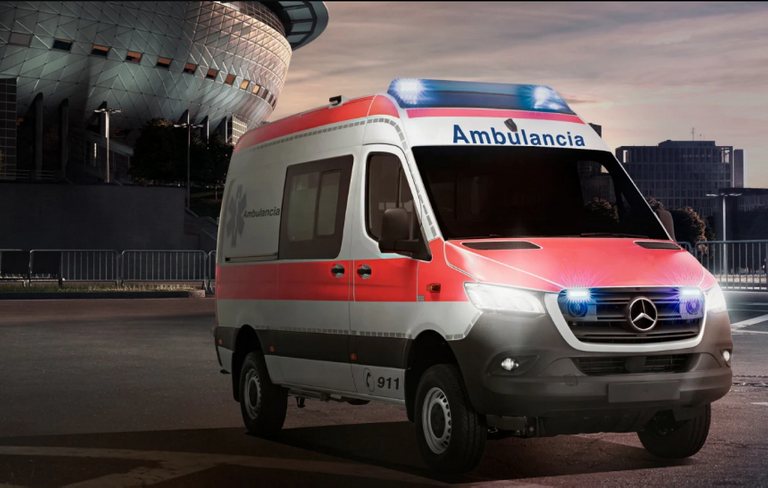
Ambulancias
Ambulances
En la actualidad las ambulancias representan un factor primordial en el sistema sanitario, debido a que permiten llegar al lugar de urgencias y trasladar de forma inmediata a los diferentes pacientes. Pero ¿sabe usted como se clasifican las ambulancias? O ¿cuales son los requisitos básicos para operar? Y ¿cuales son sus partes?, si no lo sabes no te preocupes acá te lo explicare.
Nowadays, ambulances are an essential factor in the health system, as they allow to get to the place of emergencies and immediately transfer the different patients. But do you know how ambulances are classified? Or what are the basic requirements to operate them? And what are their parts, if you don't know, don't worry, here I will explain it to you.

Como casi todos los inventos y desarrollos científicos en el campo de la salud provienen de las guerras, la ambulancia no es una excepción, no se sabe desde cuándo se utilizaba un medio de transporte para trasladar a los pacientes de un lugar a otro; pero los datos más significativos provienen del siglo X, cuando los anglosajones (baja Inglaterra) trasladaban a los leprosos y a los enfermos mentales en carros a diferentes lugares de atención.
As almost all inventions and scientific developments in the health field come from wars, the ambulance is no exception, it is not known since when a means of transport was used to move patients from one place to another; but the most significant data come from the 10th century when the Anglo-Saxons (lower England) moved lepers and mentally ill patients in carts to different places of care.
Pero aún en esos tiempos este tipo de transporte no era considerado como una ambulancia, no fue hasta 1487 cuando en las guerras españolas comandadas por la reina "Isabel I de Castilla" se creó un grupo médico militar para transportar a los heridos después de las batallas, aquí es cuando surge el término "ambulancias" como se designó al grupo encargado del traslado.
But even in those times this type of transport was not considered as an ambulance, it was not until 1487 when in the Spanish wars commanded by the Queen "Isabel I of Castile" a military medical group was created to transport the wounded after the battles, here is when the term "ambulantias" arises as the group in charge of the transfer was designated.

El grupo fue copiado por muchas naciones de Europa, pero aun seguían muriendo personas debido a que lo heridos eran trasladados luego de las batallas, lo que generaba una mayor mortalidad en pacientes que podían ser salvados si eran tratados a tiempo, esto lo entendió el medico “Dominique-Jean Larrey” quien pertenecía al Ejercito del mismísimo Napoleón Bonaparte. Larrey en vista de que las ambulancias puestas por Bonaparte a 3 kilómetros de distancia no accedían a los heridos por la trifulca de la batalla, este decide que las ambulancias se posicionen a 1 kilometro y que trasladaran a los pacientes, pero antes debían ser atendidos y estabilizados en el campo de batalla para luego ser trasladados asta la ambulancia.
The group was copied by many European nations, but people were still dying because the wounded were transferred after the battles, which generated a higher mortality in patients who could be saved if they were treated in time, this was understood by the doctor "Dominique-Jean Larrey" who belonged to the army of Napoleon Bonaparte himself. Larrey, in view of the fact that the ambulances placed by Bonaparte 3 kilometres away could not reach the wounded because of the battle, decided that the ambulances should be positioned 1 kilometre away and that the patients would be transferred, but first they had to be treated and stabilised on the battlefield and then transferred to the ambulance.

El principal avance de las ambulancias de uso civil se produjo con la introducción del transporte para enfermos de cólera en Londres, en el año 1832. Su método era muy sencillo y básicamente se reducía a una carreta en que se colocaba al paciente y que era movida por unos caballos.
The main breakthrough in civilian ambulances came with the introduction of cholera transport in London in 1832. Its method was very simple and basically consisted of a cart on which the patient was placed and which was moved by horses.
Con los pasos de los años y el avance tecnológico, las ambulancias fueron evolucionando, hasta llegar a ser como las conocemos hoy día. Pero debido a su gran importancia y el aumento de estas en todos los países se empezaron a crear regulaciones para salvaguardar la vida de los pacientes y personal paramedico, aunque cada país tiene distintas regulaciones siempre hay varias que coinciden.
Over the years and with technological advances, ambulances have evolved into the ambulances we know today. But due to their great importance and the increase of these in all countries, regulations began to be created to safeguard the lives of patients and paramedics, although each country has different regulations, there are always several that coincide.
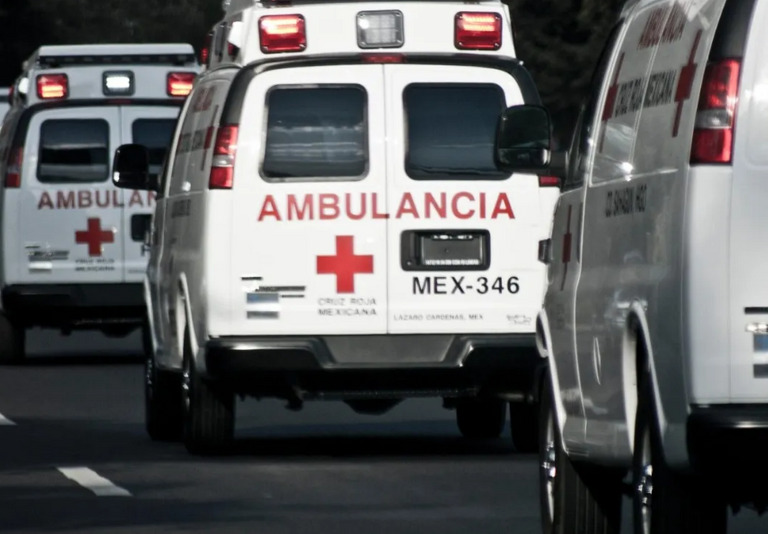
Clasificación de las Ambulancias
Classification of Ambulances
Las ambulancias se pueden clasificar en determinados tipos, dependiendo de si transportan o no pacientes, y en qué condiciones; en distintos países se clasifican de diferentes maneras; aquí intentaré definirlas de forma general y ocupar tres países en los que se clasifican de diferentes maneras y el continente europeo.
Ambulances can be classified into certain types, depending on whether or not they transport patients, and in what conditions; in different countries they are classified in different ways; here I will try to define them in a general way and to occupy three countries where they are classified in different ways and the European continent.
| Definición | Europa | USA | Colombia | Venezuela |
|---|---|---|---|---|
| Una ambulancia que tiene la misión de transportar pacientes a un centro médico, pero no para una atención urgente. Vehículos como furgonetas o autobuses pueden ser utilizados para esta tarea. | Ambulancias no asistenciales de clase A1 y A2 | Single transport ambulance STA | Transporte asistencial básico (TAB) | Ambulancia de Traslado simple (ATS) |
| Proporcionan medios y personal sanitario de emergencia para atender al paciente en el lugar del incidente y durante el traslado a un centro médico. | Ambulancias asistenciales de clase B | Basic Equipment Ambulance (BEA) | Transporte asistencial medicalizado (TAM) | Ambulacia de Emergencias Básicas (AEB) y Ambulancia de de Emergencias Avanzadas (AEA) |
| Utilizado para llegar a un paciente que necesita atención muy rápida y proporcionando cuidados en el lugar donde se encuentra el paciente. Sin embargo, no puede llevárselo del lugar | Ambulancias asistenciales de Clase C | Fast Intervention Vehicle (FIV) | Ambulancia Básica (AB) | Vehículo de Intervención Rápida (VIR) |
| Definition | Europe | USA | Colombia | Venezuela |
|---|---|---|---|---|
| An ambulance that has the mission to transport patients to a medical facility, but not for urgent care. Vehicles such as vans or buses can be used for this task. | Class A1 and A2 non-assistance ambulances | Single transport ambulance STA | Basic Assistance Transport (TAB) | Single Transfer Ambulance (ATS) |
| They provide emergency health facilities and personnel to care for the patient at the scene of the incident and during transfer to a medical facility. | Class B medical ambulances | Basic Equipment Ambulance (BEA) | Medical transport for medical assistance (TAM) | Basic Emergency Ambulance (BEMA) and Advanced Emergency Ambulance (AEA) |
| Used to get to a patient in need of very rapid care and providing care at the patient's location. However, it cannot take him or her from the scene. | Class C ambulances | Fast Intervention Vehicle (FIV) | Basic Ambulance (AB) | Rapid Intervention Vehicle (RIV) |
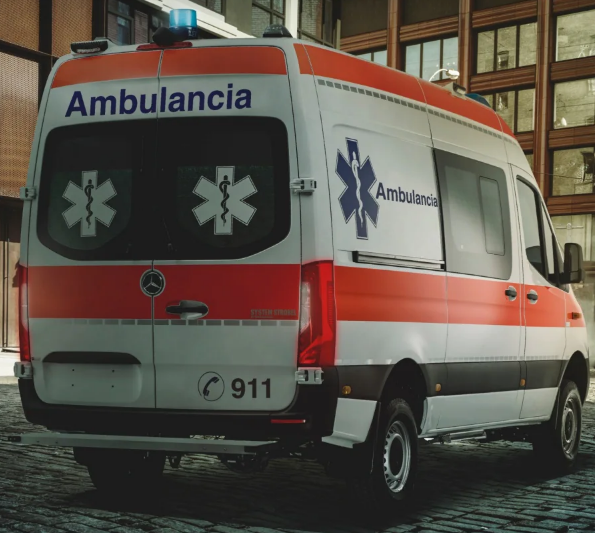
Cabe mencionar que dentro de estas definiciones existen subtipos que cada país menciona de diferentes maneras, pero a manera general y básica estas son sus clasificaciones.
It is worth mentioning that within these definitions there are sub-types that each country mentions in different ways, but in a general and basic way these are their classifications.

Características que deben tener una Ambulancia
Characteristics that an Ambulance should have
Las regulaciones para este tipo de vehículos son de carácter obligatorio, a los cuales cada cierto tiempo se le realizaran sus revisiones para ver si cumplen o no las normas indicadas, según sea el país las revisiones se realizaran de trimestral, semestral o anual, de no cumplir los reglamentos el vehiculo quedara suspendido hasta que cumpla con las normas.
The regulations for this type of vehicle are compulsory, and from time to time they will be checked to see whether or not they comply with the indicated standards. Depending on the country, the checks will be carried out quarterly, half-yearly or annually, and if they do not comply with the regulations, the vehicle will be suspended until it complies with the standards.
En esta parte hablare de manera general y reducida ya que las normativas y reglamentos son muchas, las cuales van desde la carrocería hasta el sistema audiovisual.
In this part I will speak in a general and reduced way as the rules and regulations are many, ranging from the bodywork to the audio-visual system.
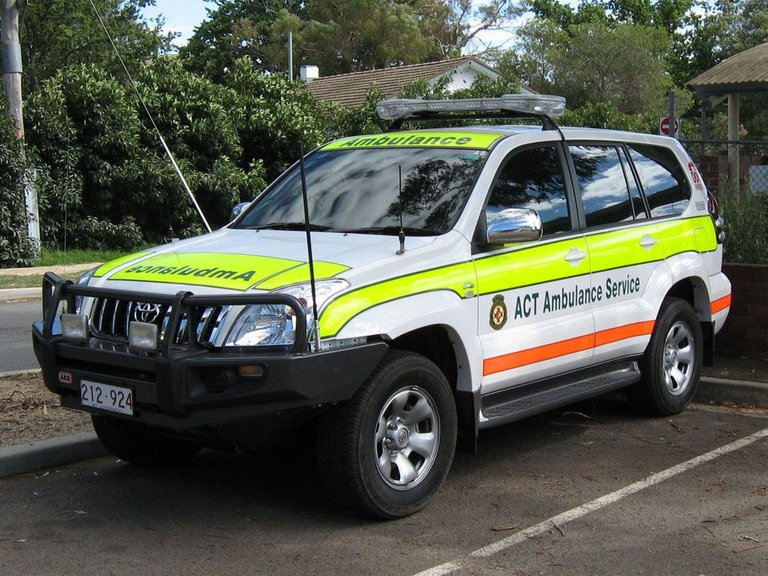
- 1. Las ambulancias terrestres deben constar de una cabina de conducción y un compartimiento del paciente. Estas áreas deben ser independientes, garantizando como mínimo la intercomunicación entre sí.
- 1. Ground ambulances must consist of a driver's cab and a patient compartment. These areas must be independent, ensuring at least intercommunication with each other.
- 2. El comportamiento mecánico del vehículo, no debe verse afectado por las modificaciones realizadas para adecuar el vehículo para el servicio de transporte de pacientes. El vehículo en cuestión debe ser de tipo comercial.
- 2. The mechanical behaviour of the vehicle must not be affected by modifications made to make the vehicle suitable for patient transport service. The vehicle in question must be of commercial type.
- 3. El vehículo debe demostrar posibilidades de acceso, ajuste y reparaciones necesarias para su fácil mantenimiento, al igual que sus condiciones mecánicas y de maniobrabilidad.
- 3. The vehicle must demonstrate accessibility, adjustability and reparability necessary for easy maintenance, as well as mechanical and manoeuvrability conditions.

- 4. Para el ingreso a la ambulancia terrestre, la misma debe contar como mínimo con tres accesos, dos ubicados en la cabina de conducción y una en la cabina paciente.
- 4. For entry to the ground ambulance, the ambulance must have at least three access points, two located in the driver's cab and one in the patient cab.
- 5. El acceso principal al compartimiento del paciente debe estar situado en la parte posterior del mismo, y constituido por una o dos hojas de apertura lateral u horizontal (que giren sobre el eje vertical, u horizontal superior), con mecanismo de aseguramiento que permita mantenerlas abiertas, y mecanismos de apertura y bloqueo externo e interno, según lo indicado en el punto anterior. Debe tener una apertura útil mínima de 1,10 m de altura y de 0,90 m de ancho.
- 5. The main access to the patient compartment should be located at the rear of the patient compartment and consist of one or two side-opening or horizontally opening leaves (rotating about the vertical or upper horizontal axis), with a locking mechanism to keep them open, and external and internal opening and locking mechanisms, as indicated in the previous paragraph. It shall have a minimum usable opening of 1,10 m high and 0,90 m wide.

- 6. Las ventanas de las puertas de la cabina de conducción solo deben accionarse, eléctrica o manualmente, desde el interior del vehículo. Así mismo el compartimiento del paciente podrá contar con una o más ventanas con fines de ventilación. Las mismas deben ser herméticas al cerrarse y accionables solo desde el interior.
- 6. The windows of the driver's cab doors shall only be operated, electrically or manually, from inside the vehicle. The patient compartment may also be fitted with one or more windows for ventilation purposes. They shall be tight when closed and operable only from the inside.
- 7. Las superficies interiores del compartimiento del paciente no deben poseer elementos afilados o cortantes. La disposición de los soportes y elementos para los equipos de asistencia deben quedar de tal forma que no produzcan daño a los ocupantes del vehículo.
- 7. The interior surfaces of the patient compartment must be free of sharp or cutting elements. The arrangement of brackets and fixtures for assistive equipment must be such that they do not cause injury to vehicle occupants.
- 8. Los revestimientos interiores del compartimiento del paciente deben ser de color claro y de material lavable, con acabado no rugoso, resistentes a los agentes desinfectantes habituales.
- 8. The interior linings of the patient compartment should be light-coloured and of washable material, with a non-roughened finish, resistant to the usual disinfecting agents.
- 9. El piso del compartimiento del paciente debe ser de superficie plana, de material lavable, antideslizante, resistente al desgaste y al uso de agentes desinfectantes. Las uniones de este con las paredes deben estar herméticamente selladas.
- 9. The floor of the patient compartment must have a flat surface, made of washable, non-slip material, resistant to wear and tear and to the use of disinfecting agents. The joints between the floor and the walls shall be hermetically sealed.

- 10. Los gabinetes del compartimiento del paciente, deben ser resistentes al impacto, lavables, sin bordes agudos o filos cortantes. Las puertas deben ser abatibles o deslizantes y de material transparente o semitransparente. Las características de las mismas deben garantizar que las puertas no se abran por efecto del movimiento del vehículo.
- 10. Patient compartment cabinets should be impact resistant, washable, without sharp edges or cutting edges. Doors should be hinged or sliding and of transparent or semi-transparent material. The characteristics of the doors must ensure that the doors do not open due to the movement of the vehicle.
- 11. Los gabinetes del compartimiento del paciente deben estar identificados con el color y nombre, según se establece a continuación: azul para sistemas respiratorios, rojo sistema circulatorios, amarillo pediátrico por ultimo verde para quirúrgicos y accesorios.
- 11. Patient compartment cabinets should be identified by colour and name as follows: blue for respiratory systems, red for circulatory systems, yellow for paediatric, green for surgical and accessories.
- 12. Las dimensiones interiores básicas del compartimiento del paciente deben ser las siguientes: longitud mínima 2.00 m, ancho mínimo 1.30 m y altura mínima 1,25 m.
- 12. The basic interior dimensions of the patient compartment shall be as follows: minimum length 2.00 m, minimum width 1.30 m and minimum height 1.25 m.
- 13. El color principal de la ambulancia debe ser visible y de fácil identificación. Se recomienda el uso del blanco como color principal.
- 13. The main colour of the ambulance must be visible and easily identifiable. The use of white as the main colour is recommended.
- 14. En todos los lados exteriores de la carrocería, incluido el techo, debe estar la leyenda “AMBULANCIA” fabricada en material reflectivo. En el aviso de la parte anterior externa de la carrocería, la palabra “AMBULANCIA”, debe tener un largo mínimo del 90% del frente del vehículo y estar escrita en sentido inverso esto con la finalidad que al circular en situación de emergencia, los vehículos que la preceden puedan ver el nombre correctamente reflejado en el retrovisor
- 14. On all external sides of the bodywork, including the roof, the legend "AMBULANCE" must be made of reflective material. The word "AMBULANCE" must be at least 90% of the length of the front of the vehicle and written in reverse order that when driving in an emergency situation, vehicles in front of the vehicle can see the name correctly reflected in the rear-view mirror.

- 15. En los costados y en la parte de atrás del vehículo debe llevar el nombre o logotipo de la entidad a la cual pertenece, la sigla de clasificación del tipo de ambulancia según el caso y el nombre del municipio sede de la Institución Prestadora de Servicios de Salud.
- 15. The name or logo of the entity to which the vehicle belongs, the classification acronym of the type of ambulance according to the case and the name of the municipality where the Health Service Provider Institution is located must be displayed on the sides and on the back of the vehicle.
- 16. En los costados, puertas posteriores y en el techo de la ambulancia, tiene la “Estrella de la Vida”, de color azul o verde reflectivo.
- 16. On the sides, rear doors and on the roof of the ambulance, it has the "Star of Life", in blue or green reflective colour.
Requisitos del Personal
Staff requirements
Los técnicos de las ambulancias deben tener el título de Técnico en Emergencias Sanitarias (TES). Por su parte, los médicos que presten servicio en las ambulancias, deben demostrar conocimientos avanzados sobre técnicas de reanimación y soporte vital. Los enfermeros deben estar en posesión de su título y conocer también las técnicas nombradas anteriormente. Y por último, los auxiliares de ambulancias, tienen que haber cursado los estudios de capacitación para el uso de desfibriladores semiautomáticos.
Ambulance technicians must have the title of Técnico en Emergencias Sanitarias (TES). Doctors serving in ambulances must demonstrate advanced knowledge of resuscitation and life support techniques. Nurses must also be qualified and have knowledge of the techniques mentioned above. Finally, ambulance attendants must have completed training in the use of semi-automatic defibrillators.
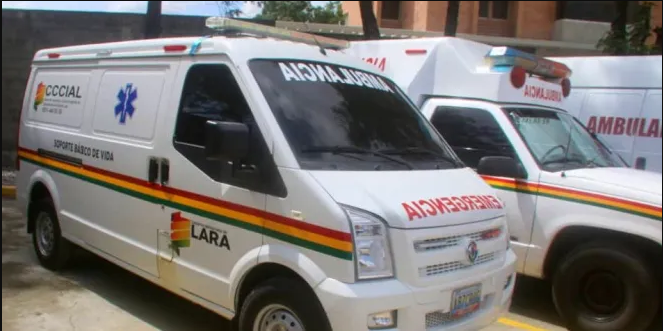
Materiales en las Ambulacias
Materials in Ambulances
- 1. Desfibrilador automático y semiautomático
- 1. Automatic and semi-automatic defibrillator
- 2. Dispensario de materiales y medicamentos
- 2. Dispensary of materials and medicines
- 3. Botiquin de emergencia
- 3. Emergency first aid kit
- 4. Sistema de Oxigeno
- 4. Oxygen system
- 5. Camilla de traslado
- 5. Transfer stretcher
- 6. Extintores contra incendios
- 6. Fire extinguishers
- 7. Juego de herramientas mecánicas
- 7. Mechanic's tool kit
- 8. Radio.
- 8. Radio
- 9. chaleco reflectivo por cada miembro del equipo
- 9. Reflective waistcoat for each member of the team
- 10. caucho de repuesto
- 10. Spare rubber
- 11. Linterna con pilas en su recamara y un juego de pilas de repuesto extra.
- 11. Flashlight with batteries in its battery compartment and one extra set of spare batteries.
- 12. gato y equipo para sustitución de ruedas
- 12. jack and wheel replacement kit
- 13. tacos de madera o de otro material para bloqueo de cauchos
- 13. wooden or other rubber blocking blocks
- 14. cincha o cinta para remolque.
- 14. tow strap or webbing.
The rewards earned on this comment will go directly to the person sharing the post on Twitter as long as they are registered with @poshtoken. Sign up at https://hiveposh.com.